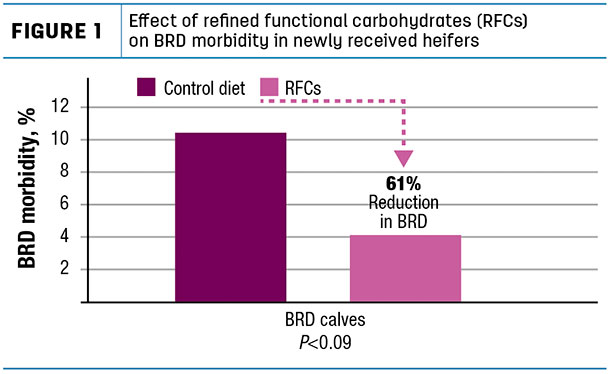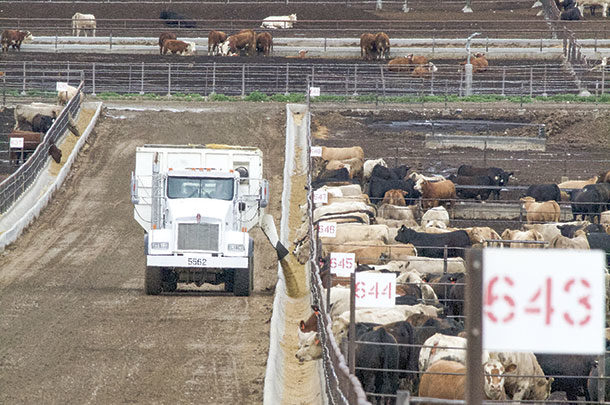Although vaccination programs have significant value in bolstering the animal’s defense system, immunoglobulin (IgG) antibody levels decrease over time, resulting in inconsistent protection levels.
Unfortunately, pathogen and toxin challenges occur every day in the environment, leaving a potential gap in immune response. That’s why it’s important for cattle producers to understand the importance of gut health. Maintaining a healthy gut goes hand in hand with vaccination to deliver an optimal immune response that can help keep many cattle out of the sick pen.
Gut: First line of defense
You may be surprised to learn that the gut is a critical piece of the animal’s immune system. In fact, 70 percent of a bovine animal’s immune defense cells are associated with the gastrointestinal tract. As a result, the gut lining is a strategic opportunity for producers to provide real-time protection and reduce the risk of disease-causing pathogens and toxins entering the animal’s system.
Whether a disease is caused by E. coli, aflatoxin, salmonella or some other pathogen, the gut is the primary point of attack in the animal’s body. Although each pathogen’s effect on the animal is different, once ingested, they have a single target – the gut lining. Therefore, the gut is the first line of defense against most diseases. Additionally, a healthy gut avoids energy drains from unnecessary immune responses so animals can maintain health and performance.
By managing immune response more proactively and effectively in the gut, producers may be able to enhance beef cattle health and performance and reduce the need for antibiotic treatments. There is growing interest in using nutrition to enhance gut health for better immune response. Feed additives are one way to help maintain a healthy gut by managing the natural microbial populations and immune response in the digestive system.
Trials show results of better gut health
Multiple research studies demonstrate that feeding refined functional carbohydrates (RFCs) can help provide a healthy base for animal growth and development, leading to improved animal health and efficiency. RFCs work by supporting the beneficial bacteria found in the intestine while blocking sites for attachment by pathogens. These materials also support optimal rumen fermentation and digestion and reduce the effects of toxins, such as mycotoxins, in feed.
In one trial at Texas Tech University, two truckloads of heifers were fed either a control diet or one containing RFCs for the first 35 days after arrival at the feedyard. The newly received heifers experienced heat stress conditions in addition to experiencing the stress of shipping. At the end of the feeding period, heifers supplemented with RFCs had a higher average daily gain (ADG) and greater dry matter intake (DMI).
In addition, those fed RFCs experienced 61 percent fewer cases of bovine respiratory disease (BRD) compared with the control group (see Figure 1).

Reduced treatment costs translated into a $9.90-per-head economic advantage to using RFCs over the 35-day receiving period.
Another trial at Oregon State University compared pens of feeder steers receiving RFCs during a 38-day receiving period. Results showed that RFCs improved growth and feed efficiency. Researchers concluded that RFC supplementation “appears to be a nutritional strategy to enhance health parameters and receiving performance of feeder cattle.”
These studies show that maintaining a healthier gut by feeding RFCs helps maintain nutrient uptake, leading to better feed efficiency and animal performance because animals are able to devote energy to all functions instead of fighting off infections or struggling to maintain feed intake.
Feedlot experiences
Matt Evans, DVM, of Russell, Minnesota, has seen these benefits firsthand in several feedlots he works with in southwestern Minnesota, ranging in size from 200 to 5,000 head. The feedlots include RFCs in liquid protein supplements throughout the feeding period to maintain gut health and improve immune response.
“Keeping the gut healthy in turn supports better immunity,” Evans says. “As a result, these feedlots have been able to reduce use of feed-grade antibiotics by up to 80 percent. This has been a simpler, better and more economical way to address cattle health issues in these feedlots.”
In conclusion, nutritional tools like RFCs help support animal health and efficiency by supporting immunity and enhancing an animal’s ability to stave off infections. That means cattle can focus energy on gain, growth and reproduction, areas that benefit themselves and the financial health of your operation.
Ultimately, maintaining a healthy gut enables animals to devote energy to body maintenance and growth – instead of mounting immune responses that detract from nutrient uptake. In addition, changing consumer preferences and government regulations may require cattle producers to adjust their antibiotic protocols now and in the future. By managing immune response more proactively and effectively, producers may be able to reduce dependence on antibiotic solutions.
—Submitted by Arm & Hammer Animal Nutrition.![]()
PHOTO: Building your nutrition program can enhance gut health for better immune response. Staff photo.
References omitted but are available upon request. Click here to email an editor.

-
Neil Michael
- Manager, Ruminant Technical Services
- Arm & Hammer Animal Nutrition
- Email Neil Michael








